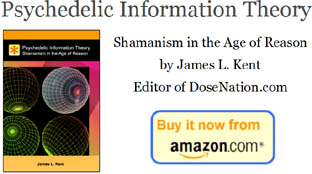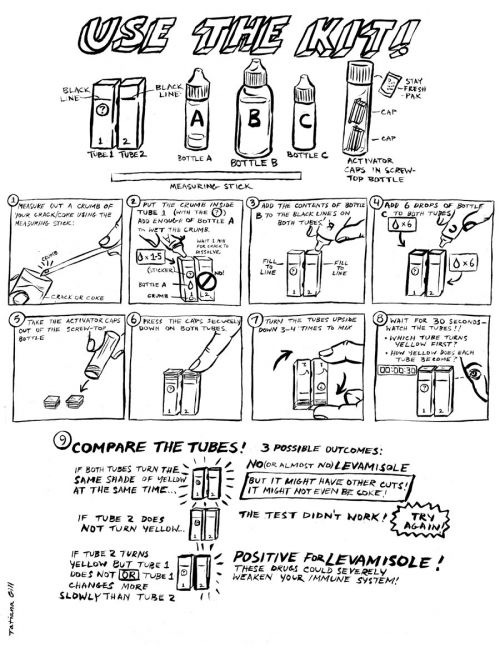
DoseNation.com contributor Nathan Messer of DanceSafe was instrumental in developing a testing kit for cocaine tainted with levamisole. Brendan Kiley at the Stranger covers the story:
Typically, it's difficult for drug users to reliably test their drugs for impurities -- it requires expensive, unstable, and sometimes dangerous chemicals used in laboratory conditions. But when Nathan Messer, head of the local drug-harm-reduction group DanceSafe, got in touch with a doctor in Seattle named Mike Clark (a psychiatrist and molecular biologist at Harborview) about levamisole, Dr. Clark had a moment of inspiration. He was already familiar with levamisole. He'd been using it in his lab for years, as a way to block an enzyme that interferes with certain color-change reactions in tissue samples. (Technically speaking, levamisole inhibits most types of mammalian alkaline phosphatase -- it slows the enzyme to a crawl, preventing it from working.) Dr. Clark's idea was to inhibit the enzyme and then test for the inhibition.
The result: DanceSafe and Dr. Clark created an easy-to-use kit out of inexpensive materials that tests for levamisole. The Stranger is paying for some of the materials, helping to distribute the kits, and collecting anonymous data about what we learn.
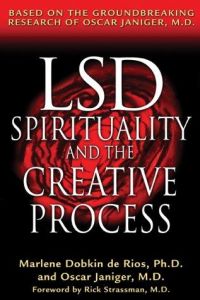 |
Originally published in 2003 'LSD, Spirituality and the Creative Process’ is essentially an examination of the subjective effects of Lysergic acid diethylamide, primarily in light of the LSD research conducted by Dr. Oscar Janiger. Written by Marlene Dobkin de Rios, the text is partially derived from a series of interviews with Janiger, conducted between March 2001 and his death in August of the same year, and is also a broad synthesis of Rios’ own research with shamanic cultures. The result is a clear sighted text delineating the various readings of the LSD experience that arose out of Janiger’s research.
The primary aim of Dr. Oscar Janiger’s research with LSD was to study the effects of the drug on a large, highly differentiated group within a non-clinical setting; a privately rented home in Wilton Place, Los Angeles. This marks an interesting point in which LSD began to outgrow its clinical settings and spread socially. Over the course of eight years he conducted LSD research with over 930 individuals from a wide cross-section of U.S. society including construction workers, professionals and artists. However, in 1962, before he could reach his aim of 1000 research subjects, the Food and Drug Administration confiscated his LSD, along with the stock of many other researchers. However, thanks to follow up studies by organizations like MAPS, Rios’ interviews with Janiger, the detailed research notes and hindsight, many interesting ideas have come to the fore, which seem pertinent and relevant in today’s psychedelic climate.
Who doesn't know what weed smells like?
In a government effort to curb what is perhaps their nation's best-known vice, Dutch households will soon receive marijuana-scented scratch-and-sniff cards to help them detect illegal urban cannabis plantations in their vicinity, the BBC is reporting.
According to Rotterdam authorities, over 30,000 cards are being distributed this week to help citizens identify marijuana's pungent odor. Each of the 8-by-4 inch cards, which bear the slogan "Assist in combatting cannabis plantations," contain two boxes which can be scratched to release the cannabis scent, along with the telephone number of a local police precinct.
"Citizens must be alerted to the dangers they face as a result of these plantations, and if they become aware of any suspect situations, they must report them," Arnie Loos, spokesman for a government-appointed working group on cannabis cultivation, is quoted by the AFP as saying. "If people do in fact call the number listed on the card, we could make this a national operation."
Despite many tourists' belief, marijuana use in the Netherlands is not technically legal, but possession and consumption of under five grams was decriminalized in 1976 under a "tolerance" policy, and citizens are allowed to grow up to five plants for personal use. According to the Telegraph, about 6,000 plantations are busted every year.
[Thanks Chris!]
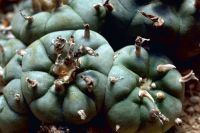 |
A large article from the Washington Post.
When the state of Texas licensed him as a peyote distributor in 1990, Mauro Morales put a sign in his front yard with his name and phone number: "Peyote Dealer. Buy or Sell Peyote."
His neighbors balked, saying calling so much attention to his trade had to be against the law. "So I called Austin and said, 'I think everything's legal. I've got the paperwork. Can't I put up a sign?'" Morales recalled.
Twenty years later, the sign still stands, but it's harder than ever for Morales to make a living. The hallucinogenic cactus is becoming more difficult to find because many ranchers have stopped allowing peyote harvesters on their land, preferring to plow the grayish-green plant under so cattle can graze. Others now lease their property to deer hunters or oil and gas companies.
The result is over-harvesting of remaining stocks, making peyote even more scarce. "Things are kind of getting slower every year," said Morales, who is one of just three Americans currently licensed to sell peyote, which grows wild in four Texas counties along the border with Mexico.
Peyote is illegal under federal law, except for use in some American Indian religious ceremonies. Since the mid-1970s, the state has licensed a small number of people to sell it to members of the Native American Church.
California voters recently rejected a proposal to legalize marijuana for recreational use, and a drug war threatens to tear Mexico apart. But Morales says his business is simple and honest.
"I try to stay out of problems," he said. "I've been doing it too long."
Morales, 67, has seven employees who search for peyote plants to harvest their "buttons," small round growths that contain the mind-altering juice mescaline, which produces a dreamlike delirium for up to 12 hours.
Users generally chew on the buttons, smoke them or boil them in water to make a drug-infused tea. The number of buttons it takes to feel psychedelic effects varies greatly by person and the potency of individual plants.
Morales' crews now bring in about 3,000 buttons per day, but even four years ago, it was 10,000. He began harvesting peyote at 14, when American Indian elders taught him to cut the buttons without harming the roots. Back then, each button could be sold to distributors for a nickel, but had to be at least as large as a half dollar.
Now Morales pays his harvesters 15 cents per button, no matter the size. "There are no more half dollar-sizes around," he said.
[Thanks Barnaby!]
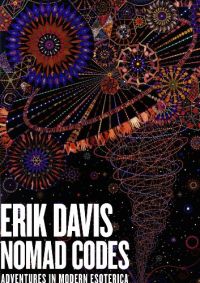 |
Erik Davis has released a new book!
In these wide-ranging essays, Erik Davis explores the codes--spiritual, cultural, and embodied--that people use to escape the limitation of their lives and to enrich their experience of the world. These include Asian religious traditions and West African trickster gods, Western occult and esoteric lore, postmodern theory and psychedelic science, as well as festival scenes such as Goa trance and Burning Man (of which Davis is the best-known chronicler). Articles on media technology further explore themes Davis took up in his acclaimed book Techgnosis, while his profiles of West Coast poets, musicians, and mystics extend the California terrain he previously mapped in The Visionary State.
Whether his subject is collage art or the "magickal realism" of horror writer H.P. Lovecraft, transvestite Burmese spirit mediums or Ufology, tripster king Terence McKenna or dub maestro Lee Perry, Davis writes with keen yet skeptical sympathy, intellectual subtlety and wit, and unbridled curiosity. The common thread running through all these pieces is what Davis calls "modern esoterica," which he describes in his preface as a "no-man’s-land located somewhere between anthropology and mystical pulp, between the zendo and the metal club, between cultural criticism and extraordinary experience, whether psychedelic, or yogic, or technological." Such an ambiguous and startling landscape demands that the intrepid adventurer shed any territorial claims and go nomad. Davis wanders with sharp eyes and an open mind, which is why Peter Lamborn Wilson calls him "the best of all guides to modern American spirituality."
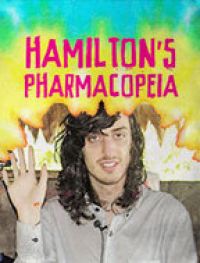 |
Of Nzambi on VBS.TV. From Boing Boing.
BB: You've written that you don't trust and that you dislike shamans. Why is that?
HM: I don't dislike shamans, I dislike the idea that we are somehow not equipped to take the drug on our own, that we need to refer to a guy who is, like, primitive from a poor country who will then tell us how to do drugs because our tainted American minds are somehow incapable of conceptualizing the psychedelic experience. And you have to have some guy who doesn't know anything about us, or our culture, or who we are, tell us how to experience a drug. It makes no sense at all.
I understand it's appealing to a new age sensibility--especially because the psychedelic experience is so incredibly difficult to conceptualize. Everyone is looking for a framework to interpret what is happening psychologically. So you can try to do it through various religions--through whatever, kabbalah, Christianity--but it's always difficult. The really difficult truth of the matter is that there is no framework at all. At all. And that nobody has any answer. But it seems appealing to people who are unwilling to take responsibility for their own experience.
It's appealing to say, "Oh, I'll go to this ancient shaman. He's an ancient man. He comes from an ancient primitive culture that understands these metaphysical things." But of course they don't, anymore than you or I do. They're just people. They don't possess any sacred knowledge that you or I don't have.
I've spoken to so many shamans and I find that most of this stuff is platitudes. It's all you know, the planet is the ambassador, it is our teacher and our mother and our father. But that doesn't really help you all that much in the end.
BB: Have you had anything that could be called a spiritual experience on any of these substances?
HM: I think they're inherently spiritual. I think it's difficult not to have a spiritual experience.
 |
With Rak Razam and Mitch Schultz, director of The Spirit Molecule DVD.
On the road in Peru with Mitch Schultz, who talks about the making of his documentary The Spirit Molecule, based on the Rick Strassman book of the same name, and why he was driven to make an independent documentary about DMT. In 2002 Schultz had his first experience with dimethyltryptamine and the entities therein: nothing would ever be the same. Schultz convinced Dr. Rick Strassman to lend his story and credibility as the narrative backbone of the documentary, studying DMT in controlled medical conditions with legal patients under the auspices of the US government from 1990-1995. Why has nature seeded DMT throughout most living things: as a strategic neurotransmitter, a language for nature to communicate within itself? What is the value of contact experiences with entities in innerspace? How can film communicate a glimpse of the DMT realm and how ready are mainstream audiences for it? Join experiential journalist Rak Razam and filmmaker Mitch Schultz in search of the answers...
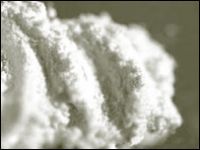 |
The Stranger's feature on the politics and mystery of levamisole tainted cocaine, part two, by Brendan Kiley.
The Colombian cocaine trade has been tangled up in the country's guerrilla wars for decades: FARC fights the government, the government fights FARC, and the right-wing paramilitaries fight FARC on the government's behalf with an extra measure of savagery. FARC and the paramilitaries constantly jockey for territory -- to gain not only political power, but access to rivers, coastal mangrove swamps, and other secret routes where they can smuggle weapons and cocaine to fund their decades-old war.
The paramilitaries, according to Diego and his family, are the worst of the bunch. FARC at least tends to pay its workers, they say. The paramilitaries, on the other hand, have a reputation for stealing coca leaves from farmers at gunpoint and making their cocaine workers labor for months for little or no pay. Sometimes, Diego said, they pay you in lead -- a bullet to the brain.
"You can't talk about FARC or the paramilitaries ever, because you don't know who's working for who or who they've recruited," Diego said. "Even people you know are on both sides, so you can't be drunk at a bar and bring up anything -- your cousin's girlfriend might be working for the other side. People disappear and get killed all the time. It's very dangerous to talk, to do anything."
Read more about the cocaine factories, gangs, DEA intervention, corruption, and, of course, animal dewormer. No story about cocaine would be complete without animal dewormer.
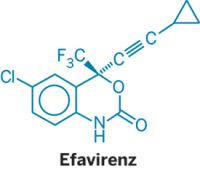 |
As it turns out the antiretroviral drugs marketed by multinational pharmaceutical companies as a treatment for HIV are actually highly addictive narcotics:
Whoonga, as it's known, is a substance being smoked in poor township communities around Durban, and it's popping up in other parts of the country as well.
Drug-taking is commonplace in the townships - what else do you do if you're unskilled, uneducated and unemployed, as so many are?
Backroom experimentation produces an ever-changing array of concoctions that offer a cheap and lethal high.
What makes whoonga different - a fine white powder, added to marijuana and smoked - is its composition.
It's a blend of detergent powder, rat poison and, crucially, crushed up ARVs, or antiretroviral drugs distributed free to HIV sufferers.
With South Africa finally making inroads in the battle against HIV and Aids after years of denialism, this is a dreadful blow.
Whoonga is cheap, bought from a dealer for just 20 rand or $3 a hit. But 40 per cent of all South Africans survive on little more than $2 a day.
The average jobless whoonga user needs multiple hits to get through the day, so for many crime becomes the only way to secure a regular supply.
Worst of all, it means people in need of ARVs to save or prolong their lives are sometimes going without.
They're being mugged for their pills as they leave the clinic.
Whoonga is basically just smoked ARVs, most commonly Efavirenz (brand name Sustiva & Stocrin). Regardless of media hype about how it's consumed and any supposed additives, television news footage clearly shows a crushed tablet being smoked in a handrolled tobacco cigarette.
And of course Whoonga is surrounded by all the drug-war-retoric about the use and abuse of recreational substances. But what the media has yet to mention, if these drugs are so addictive and destructive, surely there must be a better treatment for HIV?!
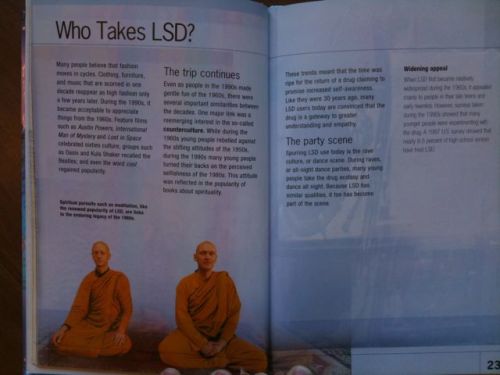
I was looking through the library at a local high school (I was there as a judge for a Lego Robotics competition, it was on the up-and-up I swear) and found the section of books to scare kids away from drugs. This is a fairly progressive school and the books were negative but non sensational, for the most part, which I think is well within reason. But one page from one book, Just the Facts: LSD struck me as particularly entertaining; I've attached a photo here. The text reads:
Who Takes LSD?
Many people believe that fashion moves in cycles. Clothing, furniture, and music that are scorned in one decade reappear as high fashion only a few years later. During the 1990s, it became acceptable to appreciate things from the 1960s. Feature films such as Austin Powers, International Man Of Mystery and Lost in Space celebrated sixties culture; groups such as Oasis and Kula Shaker recalled the Beatles; and even the word cool regained popularity.
The trip continues
Even as people in the 1990s made gentle fun of the 1960s, there were several important similarities between the decades. One major link was a reemerging interest in the so-called counterculture. While during the 1960s young people rebelled against the stifling attitudes of the 1950s, during the 1990s many young people turned their backs on the perceived selfishness of the 1980s. This attitude was reflected in the popularity of books about spirituality.
These trends meant that the time was ripe for the return of a drug claiming to promise increased self-awareness. Like they were 30 years ago, many LSD users today are convinced that the drug is a gateway to greater understanding and empathy.
The party scene
Spurring LSD use today is the rave culture, or dance scene. During raves, or all-night dance parties, many young people take the drug ecstasy and dance all night. Because LSD has similar qualities, it too has become part of the scene.
Widening appeal
When LSD first became relatively widespread during the 1960s, it appealed mainly to people in their late teens and early twenties. However, surveys taken during the 1990s showed that many younger people were experimenting with the drug. A 1997 US survey showed that nearly 8.5 percent of high school users have tried LSD.
The page has a photo of buddhist monks in orange robes, with a caption "Spiritual pursuits such as meditation, like the renewed popularity of LSD, are links to the enduring legacy of the 1960s."
To me, this reads like it was written by someone who is actually quite favorable to LSD and spirituality and the '60s, but was obviously under compunction to write something neutral and slightly dismissive at best; however, they're also almost endearingly naive... Still, underneath that, it is vaguely accurate, I'd say.
|

Recently @ DoseNation
|
|

















